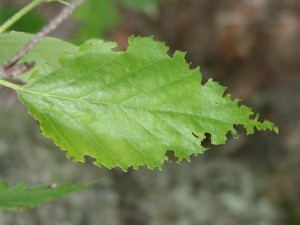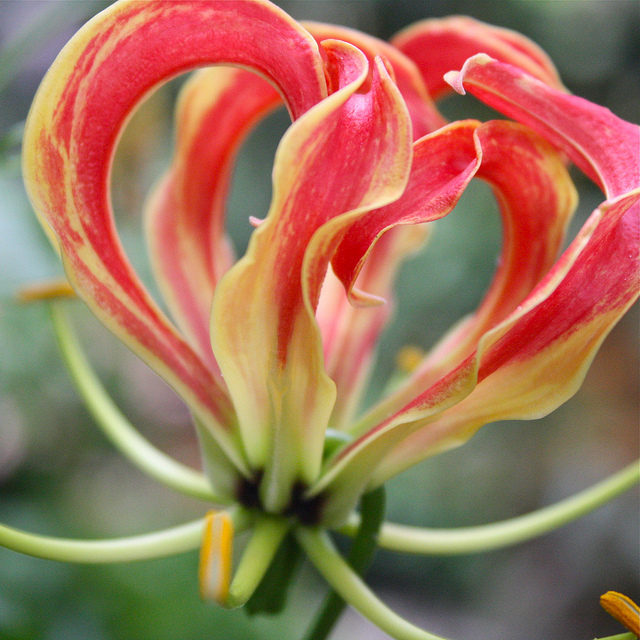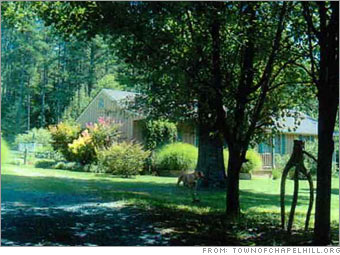 Don’t be surprised if you see a little more insect damage than usual this summer. This winter’s mild weather has resulted in insect populations being more vigorous than usual this spring and summer. Some of the insect pests that we don’t see much of until summer showed up considerably earlier than in most years. Take pickleworms for example. These are the moth caterpillars that you may find dining inside the fruit of your cucumbers and other members of the squash family. In most winters, the population is killed back to frost-free regions of south Florida. It takes a few months most years for the moths to fly north and find our gardens in SC. This year folks were seeing them mid-spring. (See http://entnemdept.ufl.edu/creatures/veg/pickleworm.htm for more information on pickleworms.)
Don’t be surprised if you see a little more insect damage than usual this summer. This winter’s mild weather has resulted in insect populations being more vigorous than usual this spring and summer. Some of the insect pests that we don’t see much of until summer showed up considerably earlier than in most years. Take pickleworms for example. These are the moth caterpillars that you may find dining inside the fruit of your cucumbers and other members of the squash family. In most winters, the population is killed back to frost-free regions of south Florida. It takes a few months most years for the moths to fly north and find our gardens in SC. This year folks were seeing them mid-spring. (See http://entnemdept.ufl.edu/creatures/veg/pickleworm.htm for more information on pickleworms.)
Diagnosing insect damage is not always straightforward. There are a number of other things that eat plants in our gardens, from mites and slugs to rabbits and deer. As a rule, damage to plants caused by mammals will be “larger” than that caused by bugs—the bite and the appetite of a caterpillar are dwarfed by those of a deer (or a rabbit or a squirrel or a mouse…).

Slug and snail damage is easily confused with that caused by some insects. Slugs and snails have rasping mouths and scrape away the plant tissue they ingest. Under a magnifying glass, the edges of damage from slugs and snails resemble torn newspaper. Damage from beetles, caterpillars, grasshoppers and other chewing insects looks more like paper cut with scissors. Slugs and snails are easy to check for. If they are present in high enough numbers to cause noticeable damage to your plants, you should have no trouble capturing them with a beer trap (www.lhwmp.org/home/publications/publications_detail.aspx?DocID=PsNaozolIas%3d, www.ericamulherin.com/blog/2011/05/05/garden-check-in-slugs-wars).
Mites and several types of insects have needle-like mouthparts and damage plants by piercing and sucking. It can be difficult to distinguish mite damage from that caused by thrips and some other very small insects, but fortunately the first thing to try, insecticidal soap, is the same for all of them. Larger piecing-sucking insects like stinkbugs, boxelder bugs, leaf hoppers and plant hoppers won’t be controlled with soap, but are seldom found in large enough numbers to do much damage. An exception is that stink bugs, squash bugs and some other true bugs can do considerable damage to fruits and vegetables, and more toxic or labor intensive control methods are needed (e.g. www.clemson.edu/extension/hgic/pests/plant_pests/veg_fruit/hgic2207.html).
I wish I could point you to an easy to use web resource to solve mystery damage to your plants, but I’m not aware of one. The best thing you can do is to catch whatever is causing the damage in the act. If you don’t recognize the culprit (and it’s not a mammal or bird), try to collect it. I recommend going to the Google images page and searching the name of your damaged plant followed by “leaf damage” (or other appropriate term). Scroll through the photos and try to match the damage and the critters you see.
I would like to share three websites, should you like to pursue plant problem diagnosis further: http://pubs.ext.vt.edu/426/426-714/426-714.html, www.ca.uky.edu/agc/pubs/id/id194/id194.pdf, www.agnr.umd.edu/extension/gardening/mastergardeners/gardeningtopics/plantdiagnostics/DiagnosingInsects2007.pdf. They are from the state Order cialis no rx Extension services of Virginia, Kentucky, and Maryland, respectively. I would also urge you to take advantage of Clemson Extension’s resources—you can find information on submitting plant and insect samples for ID and control recommendations at www.clemson.edu/plantclinic.





